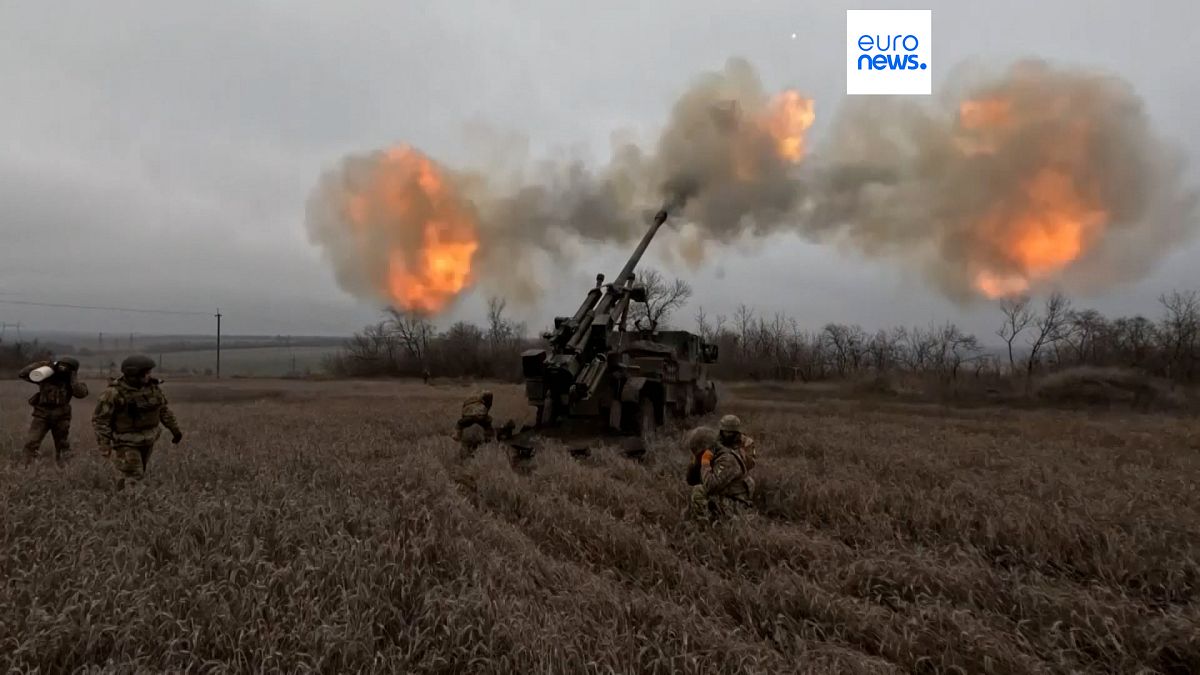Eighteen per cent of Ukrainian territory is currently occupied by Russia. More than 6.4 million Ukrainians are refugees.
The war in Ukraine is entering its third year. What are the civilian and military losses? How much aid has been promised and delivered to Kyiv? How many Ukrainians are refugees or displaced?
Here's what we know, or don't know, so far.
Financial and military aid
At the beginning of February 2024, the European Union approved a new €50 billion package for Ukraine.
On the American side, the $60 billion promised to Kyiv months ago is still blocked in Congress due to a veto by Republican representatives.
The European Union is Ukraine's biggest donor. Its commitments between 24 January 2022 and 15 January 2024 amount to more than €144 billion, according to the Kiel Institute, which quantifies the military, financial and humanitarian aid promised and delivered to Ukraine.
"However, we note that only €77 billion has been allocated to specific packages. So there is quite a significant gap between what has been promised and what has actually been delivered in financial terms," explains Pietro Bomprezzi, head of the Ukraine Support Tracker project.
"A large part of this gap is attributable to the EU's very substantial financial commitment, the €50 billion that has been under discussion for a long time since June 2023 and which was only recently approved," adds the economist. "It will be delivered in the next few months," he assures.
For its part, the United States is the second-largest provider of aid to Ukraine. It has pledged more than €67 billion, according to the Kiel Institute.
If we look exclusively at military aid which Ukraine desperately needs on the ground, Washington, with pledges of more than €42 billion, is the biggest donor.
Conflict stalemate
The front line, which stretches for almost 1,000 kilometres, has not changed much in recent months.
According to Neil Melvin, Director of International Security Studies at the Royal United Services Institute, this is a sign that the conflict is getting "bogged down".
"We're really in a war of position and attrition in which both sides are trying to wear each other down," Neil Melvin, director of International Security Studies at the Royal United Services Institute, says.
"Neither side currently has the capacity to break through," he adds.
Nearly 18% of Ukraine is currently occupied by Russia.
Success in the Black Sea
The Ukrainian counter-offensive in the summer of 2023 was a failure, both experts agree.
Melvin believes that the objectives set at the start of the offensive - "substantial breakthroughs" and "a significant amount of territory taken from the Russians" - were not achieved, despite a considerable effort by the Ukrainians and support from its allies.
This failure has dealt "a huge blow to the morale and credibility of the Ukrainian army", confirms Dickinson.
In the absence of progress on land, Kyiv has scored several successes in the Black Sea.
Ukrainian strikes on Russian naval forces have reopened the grain corridor for Ukrainian exports.
On 14 February 2024, Ukraine claimed to have sunk a large Russian landing ship off Crimea. Moscow has not confirmed this loss.
'State secrets'
It is difficult to estimate the number of civilians and military personnel injured or killed during the two years of war in Ukraine, deemed "state secrets", according to Neil Melvin.
In December 2023, a declassified US intelligence report listed 315,000 soldiers wounded or killed on the Russian side.
The "New York Times" revealed in August 2023 that 70,000 Ukrainian soldiers had been killed and between 100,000 and 120,000 wounded, based on estimates by American officials. Russian losses were higher: 120,000 Russian soldiers are estimated to have died between the start of the war and August 2023 and between 170,000 and 180,000 were wounded.
Demographic crisis
Both sides are therefore trying to reconstitute their troops.
In Ukraine, a draft law has been proposed to lower the age of conscription from 27 to 25.
It is currently a hot topic among the population.
Ukrainian forces "must replenish their losses, which have been very high. They also need to give those on the front line the opportunity to rotate, to have a break," says Dickinson. "There are people who have been fighting for two years now without respite. They are exhausted."
The average age of soldiers on the front line is now around 43.
Kyiv is therefore faced with the dilemma of replenishing its troops without sacrificing the young people on whom its demographic future depends.
6.4 million refugees
More than 10 million Ukrainians have been forced to leave their homes since the start of Russia's full-scale invasion of Ukraine.
Of these, more than 6.4 million are refugees abroad.
The overall number of Ukrainian refugees has thus increased by 5% between the end of 2022 (5.7 million) and the end of 2023, according to the Office of the United Nations High Commissioner for Refugees (UNHCR).
Of these, 6 million Ukrainians have found refuge in European countries.
The leading host countries in Europe are Germany (1.1 million), Poland (957,000) and the Czech Republic (376,000).
"Others have gone further afield, generally if they have family ties, if they have some sort of social support network in other European countries," explains Donovan.
In addition, 3.7 million Ukrainians are displaced within their own country.
Around 900,000 people have returned to Ukraine for more than three months.
Finally, almost 39% of Ukrainian refugees in Europe have made "short-term visits" to Ukraine, to visit their families or check on the state of their property.
